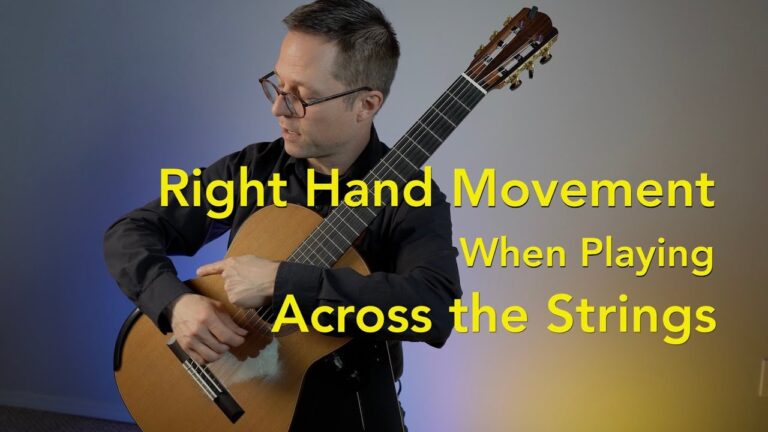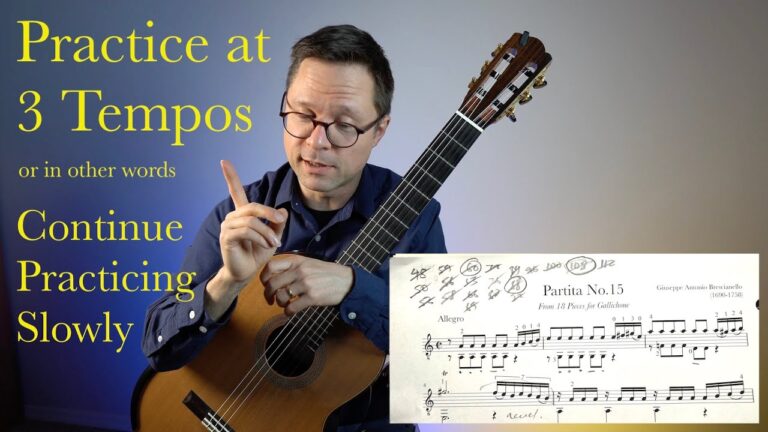Lesson: Hinge Barres, Pivots, and Partial Barres for Classical Guitar
YouTube Lesson Link
A dedicated barre (bar) lesson on Hinge Barres, Pivots, and Partial Barres. How to play these various barres and when to use them. I mention these in my pieces quite often so it was time to put out a lesson explaining their uses and specifics. Also see my lesson on basic barres as well if you need advice on the basics.
Barre Abbreviations in scores:
- BV3 = Barre at the 5th fret, over three strings (E, B, G Strings)
- BV5 = Barre at the 5th fret, over five strings (E, B, G, D, A, Strings)
- BIII2 = Barre at the 3rd fret, over two strings (E, B Strings)
- hBV = Hinge Barre, a barre only over some of the strings while allowing open strings to sustain (commonly open bass strings). Usually followed either by a full barre or a new bass note with the 1st finger.
- Piv. (or piv.BII2) = Pivot Barre, a technique where the player either pivots into a barre or releases a barre while allowing certain notes to sustain or avoiding a finger jump to a new string.
I don’t indicate Partial barres because if I notate an open string while barring it’s self-explanatory. The RCM uses a fraction to indicate the number of strings but it’s not completely intuitive.





Is collapsing your knuckle for that one finger A bad for your joints?
Good overview. Thanks!